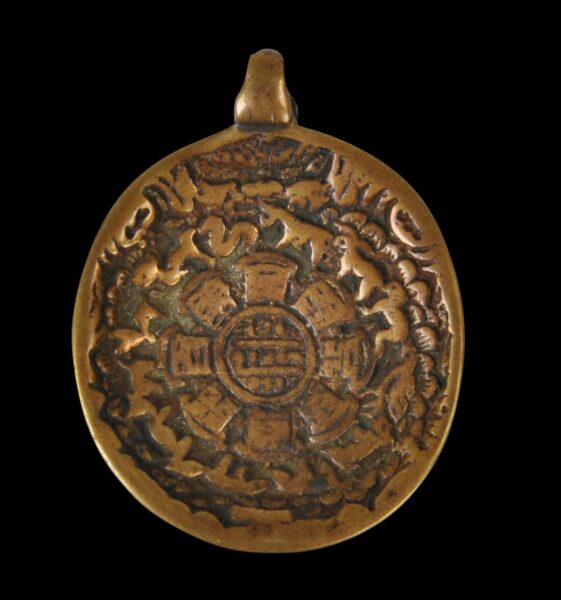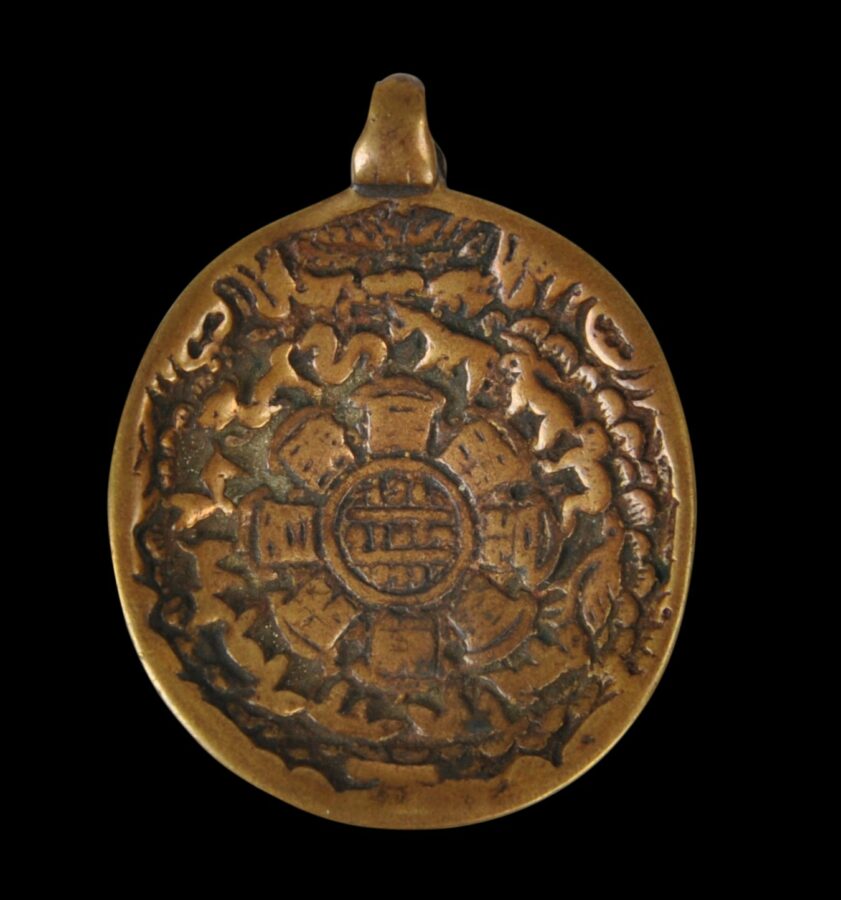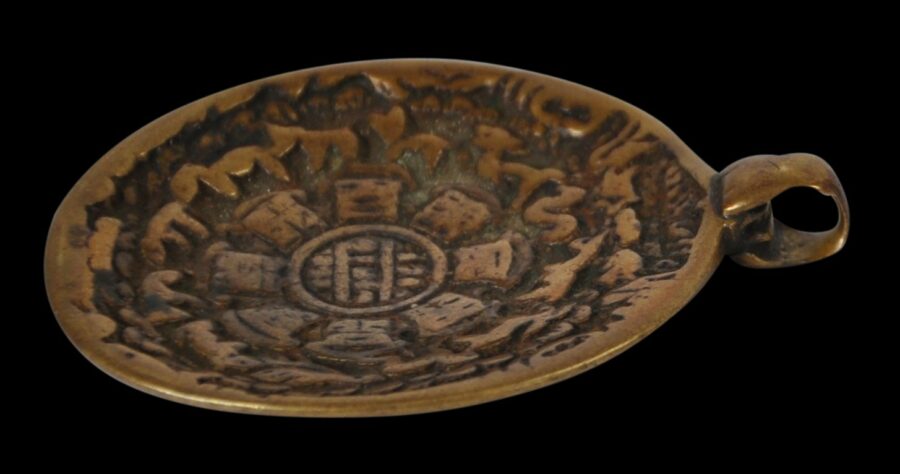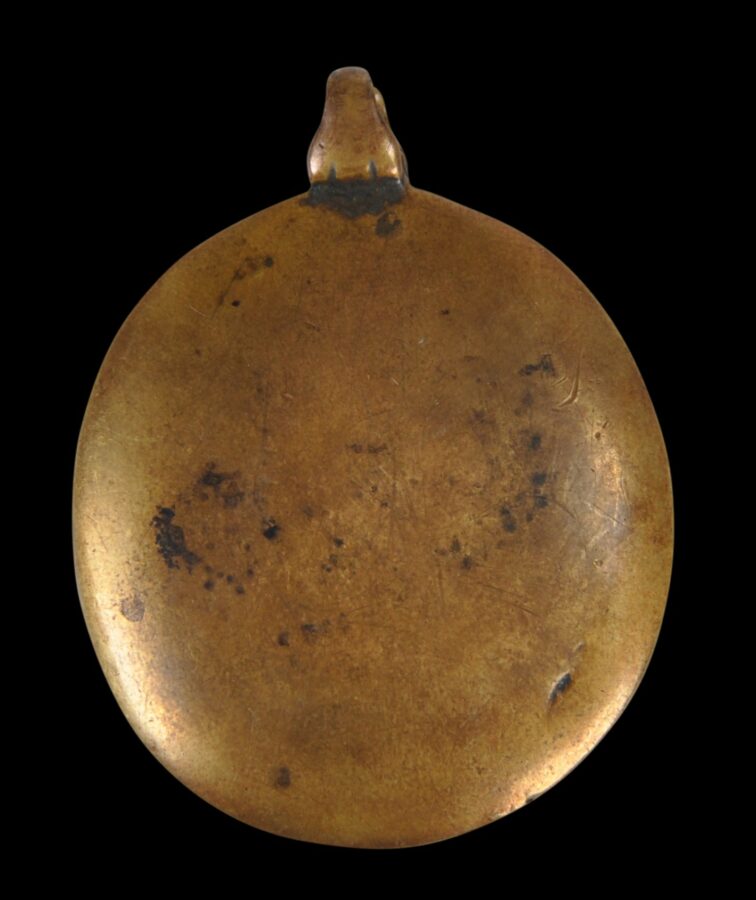This brass tokcha dates to around the 16th century.
It is decorated with the twelve animals of the Chinese zodiac, around an inner border that has in much-worn Chinese script, the name of the Chinese hours of the day. (Traditionally one Chinese hour was equivalent to two ‘Western’ hours and each hour was given a name and sign of the zodiac.) The reverse of each has been cast in relief with a Tibetan Buddhist motif. These relate to a cloak pin with zodiac motifs published in Borel (1994, p. 168).
It has an applied suspension loop at the top which shows much wear.
The back of the tokcha is smooth and polished and may have functioned as a ritual mirror (melang).
Mirrors have special meaning in Tibetan Buddhism, although they seem to have their origins in the Bon religion that predates Tibetan Buddhism.
Ritually, they symbolise the voidness of the world and the emptiness of substances. Such mirrors were used ritually, often by oracles, and also worn as chest pieces, perhaps to repel evil. Examples of sets of mirrors that appear to have been worn by Tibetan soldiers are known. These seem to have served a talismanic, protective function. Polished metal mirrors also were hung above doors in temples and monasteries, again as protective devices.
Tokchas (also spelt as thokcha, tokche, thogchak, thog-lcag, or thogchag) are small ‘found’ ancient, sacred objects that went on to serve as votive talismans, and which were valued for their magical properties. Usually they are of bronze or copper alloy. Many are believed to also contain some meteoric metal. Tibetans highly prized them and would wear them to protect them and to absorb evil. Usually they were hung from the neck or attached to clothing, but also were sewn onto amulet pouches or attached to religious articles. They were also used by Tibetan shamans – healers, spirit-mediums and magicians – as part of their ‘tools’ of trade.
References
Bashkanov, M., M. Bashkanov, P. Petrov, & N. Serikoff, Arts from the Land of Timur: An Exhibition from a Scottish Private Collection, Sogdiana Books, 2012.
Borel, F., The Splendour of Ethnic Jewelry: From the Colette and Jean-Pierre Ghysels Collection, Thames & Hudson, 1994.
Ghose, M. (ed.), Vanishing Beauty: Asian Jewelry and Ritual Objects from the Barbara and David Kipper Collection, Art Institute of Chicago, 2016.
Heller, A., Early Himalayan Art, Ashmolean Museum, 2008.
Henss, M., Buddhist Ritual Art of Tibet: A Handbook on Ceremonial Objects and Ritual Furnishings in the Tibetan Temple, Arnoldsche, 2020.
Reynolds, V. et al, From the Sacred Realm: Treasures of Tibetan Art from the Newark Museum, Prestel, 1999.





